Persistence Pays In Silver and Brown
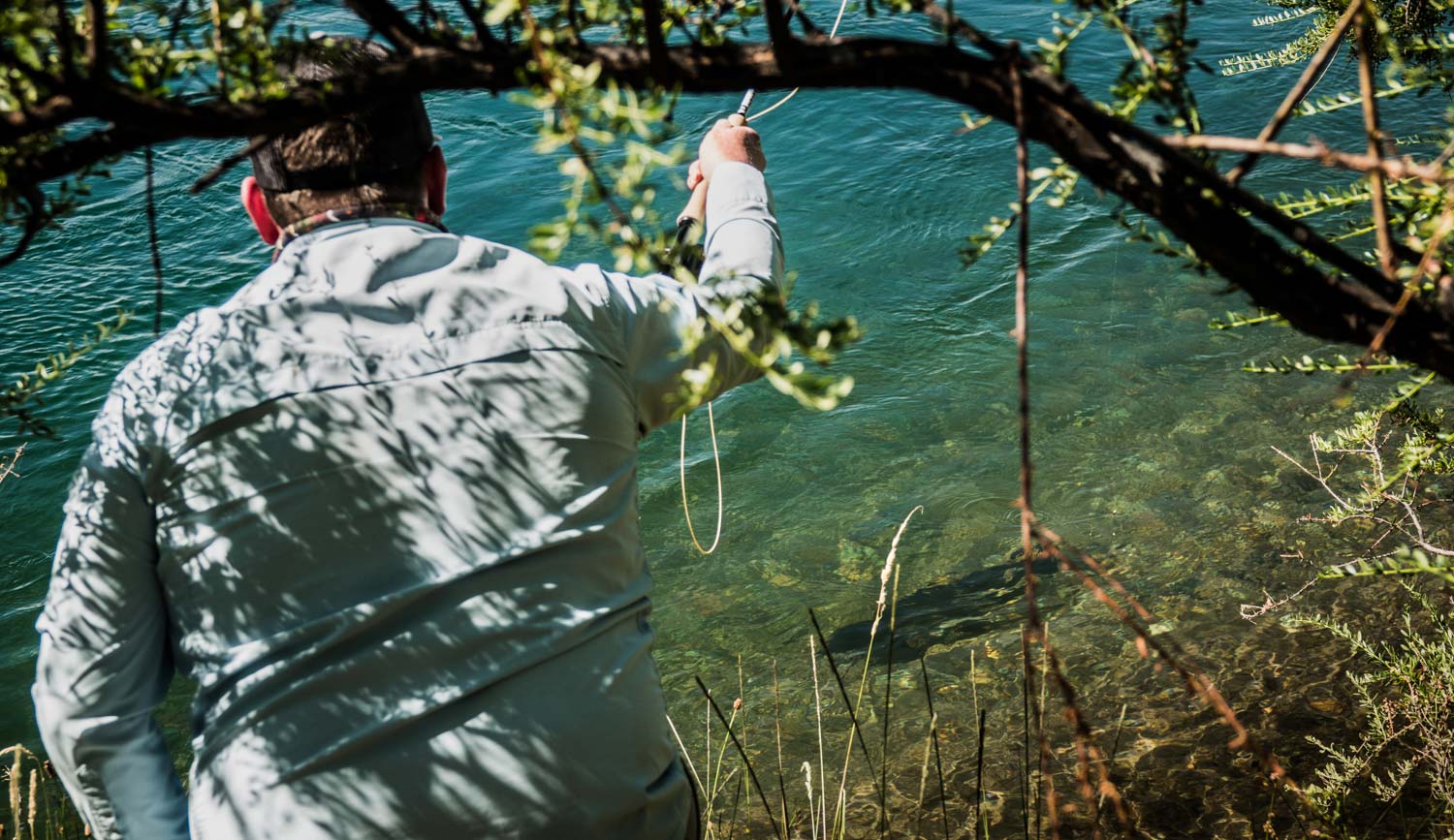
By Justin Pickett
Pulling up to today’s lunch spot was a little more eventful than usual.
A morning filled with hopping from spot to spot on a panga-style boat, named Ms. Suzy, had left us starving for a solid meal and a cold beer. The day’s program was a streamer junkie’s dream. Hunting down prime water and ripping floating minnow patterns across the ripples of the Limay had already made for an exciting morning on the water. The explosive takes and hyper aggressive trout left many of us with jaws on the water, as well as frayed, tattered tippet. The first part of the day had certainly lived up to the hype, and with the hot sun beating down on us, a seat in the shade sounded amazing.
As we cruised up to grassy shore along the right bank of the river, we all took immediate notice of a large, dark, shadowy figure lying just off the bank where we had planned our dine and dash. The four of us must have seen it all at once, as we all pointed to this large creature and gawked at its size. There was no doubt that this was one of the big, migratory brown trout that begin to make their way up the river, following schools of baitfish. I thought for sure that the sound of the outboard would spook it as we idled toward the bank, but, to our surprise, this trout stayed chill as we floated by as quietly as a seventeen foot boat possibly could. Anchoring the boat quietly, we all jumped off the boat and immediately began scheming up ways that we might entice this large brown to play our game.
After surveying the trout’s lie and attitude, we decided that nymphing might be the best initial method, so we quickly strung up the only rod that wasn’t currently set up for streamer fishing: an Orvis H3D 905-4. The setup wasn’t perfect, as we weren’t exactly prepared to be doing any type of nymphing, but the rig would work. We collectively picked out a single #12 PT tied on a barbless jig hook with a brightly dubbed collar and affixed it to the end of the 3x leader that had just been hastily tied up moments prior. No indicator. This would be a very crude tight-line attempt. After checking and re-checking each knot, it was game time.
Trudging through the brush along the bank as quietly as someone being barraged with rose bush thorns (seriously… really big damn thorns) could, we found a nice spot along the bank that overlooked this brown’s current position, which made things a little tricky. Looking over to my right, I could see Willy chuckling as he tried to piece together the sleeve of his shirt after following me through the thorns.
With the commotion of a couple gringos tap dancing along the bank with anticipation, this seasoned trout had pushed a little further upstream, sliding its nose just underneath an overhanging bush. While this gave me a little more cover to move around and get situated, it also made it nearly impossible to drift a fly anywhere near him. But that wasn’t going to stop me.
Read More »Assault on Omaha Beach, a Study in Finding Carp
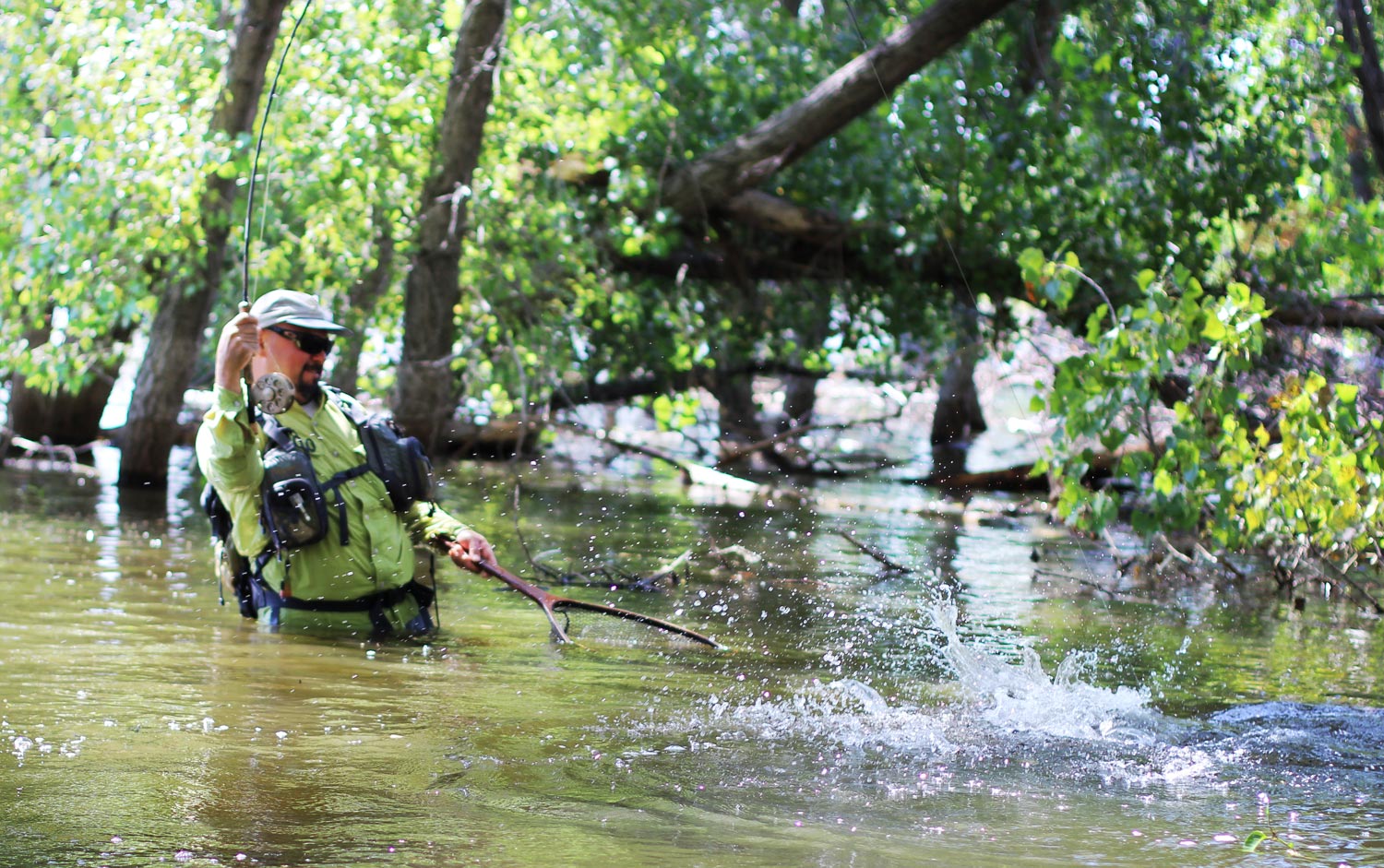
How to locate carp on new water, that are accessible to a flyrodder.
I’ve been banging around ideas in my head for how to write a piece describing the best way to locate carp. Frankly, I’ve been struggling a little bit. The problem is, I can look at a satellite map, or walk up to a body of water and have a pretty good idea of what looks carpy. I just don’t know how I know. Then I got a phone call from McTage Tanner last Tuesday.
“Let’s explore Lake McConaughy. I think it could become an A level destination for carp fishing.”
We’d discussed McConaughy before. This massive reservoir lies in the heart of the Nebraska Sandhills where the damming of the North Platte River created a 120-foot deep, 20,000-acre monster lake. Once the home of stripers and still a trophy walleye and trout destination, this behemoth, bottom release reservoir is massively productive; growing trout in its tailwaters at the rate of an inch a month. Ten-pound trout are caught there frequently but it wasn’t the trout we cared about. We did like the idea of clean, highly productive water, situated on a sand bottom holding healthy populations of carp. This could, indeed, be a special place.
Late night phone calls ensued, studying Google maps and soon we’d added two more PhD level carpers to the expedition. We poured through 8-year-old forum reports of carp as by-catch. Looked at bow-fishing sites and records and got anecdotal evidence from some local walleye guys. They don’t fish for carp, but they’d seen ‘em. By the time we left we knew this much, carp lived there and it was huge. Saddle up boys, this could be epic or disastrous, but it probably won’t fall in between.
I met Larry Dostal at his house in Omaha, threw my camping gear into his pickup and we were just getting on toward Lincoln when it occurred to me. For the next day and a half, I was about to do exactly what people asking me, where to find carp, are trying to do. I’m going to a new water body and searching for fish that may or may not be there.
If I paid attention, I’d find all the answers I needed for my piece. So I paid attention.
Read More »The Ring of Fire
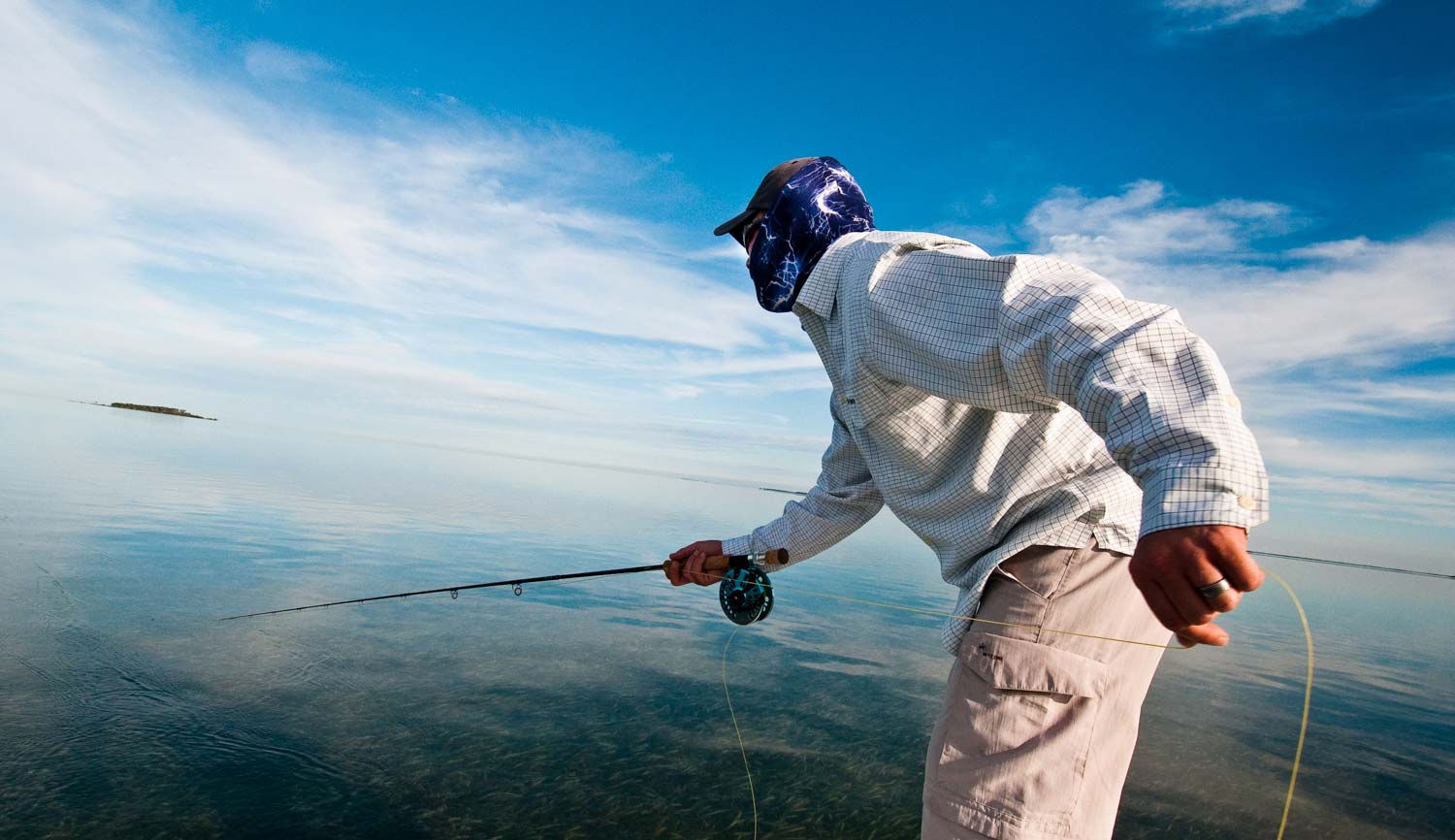
“For every species, anywhere in the world, there’s a ring of fire…” – Oliver White.
Oliver stopped by for dinner during the January Bonefish School at Bair’s Lodge this year, and it didn’t take long for the conversation to turn to his angling adventures around the world. One of the guests asked him, in his experience, how important is casting skill. The answer was, in summary, it’s everything.
Oliver began to spin the woven placemat, about the size of a vinyl LP, in front of him.
“For every species, anywhere in the world, there’s a ring of fire, put the fly in that ring and it will be eaten.” He lifted the placemat, “It’s about this big.”
Obviously, when we are talking about fly fishing at this level there are a hundred variables and choices the angler makes which affect success, but if the fly isn’t in the zone, you aren’t in the game. In spite of angry angler rants to the contrary, casting skill does matter. Anglers who can cast farther, more accurately, and in harsher conditions will catch more fish. That’s simple math. So, practice your casting, and I’ll leave it there. What is more interesting to me is the idea of knowing exactly where that placemat lands.
The ring of fire is always on the move.
Where exactly the fly should be placed is the first question an angler should ask themselves when making a presentation. Far more important
Read More »Czech Nymphing: Dell Neighbours Talks Tactics & Rigging with G&G
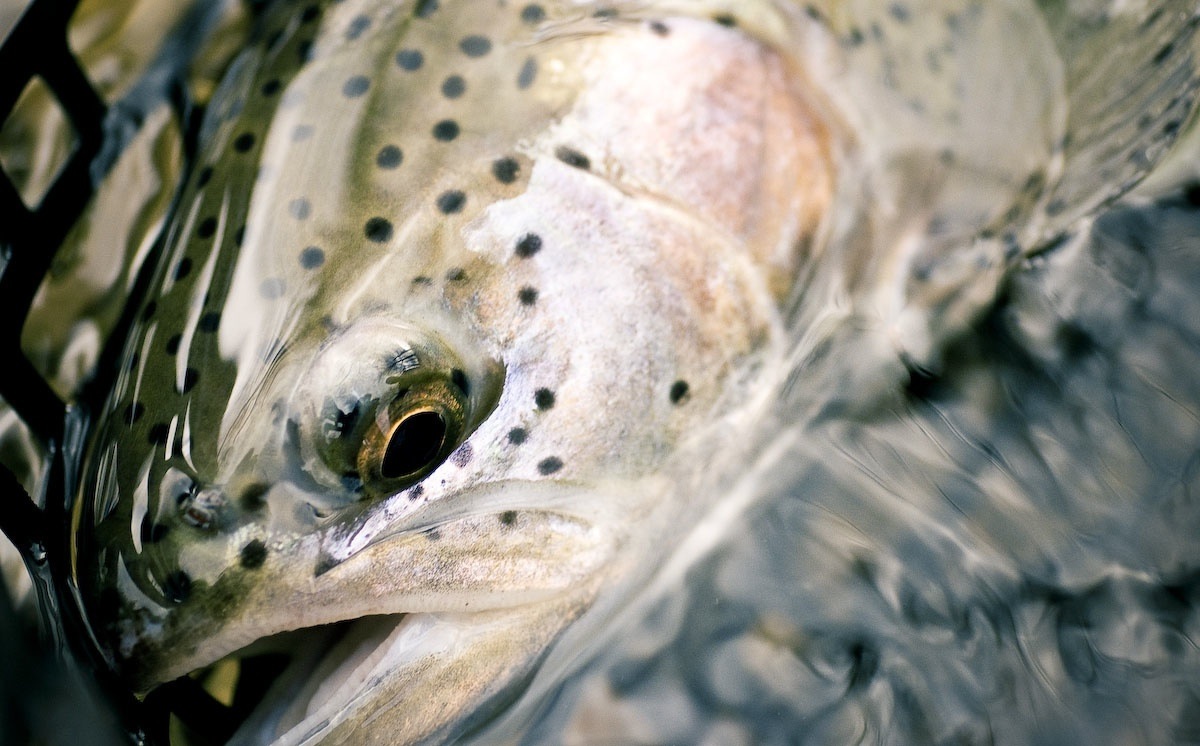
For a while now, we’ve been getting requests from G&G readers about writing a Czech nymphing post. It’s a subject we’ve wanted to tackle on the blog for a while now, but neither Louis or I specialize in Czech nymphing. Furthermore, we’re not the kind of guys that write about fly fishing topics that we’re not experienced with. When we find ourselves in this position, we go out and talk with the professionals who are, gather the information, and then bring it back to you. Dell Neighbours, head fly fishing guide for Reel Job Fishing, is highly competent in Czech nymphing, and he’s volunteered to talk with us today about Czech nymphing tactics and his rigging recommendations.
CZECH IT OUT!
I often have clients ask me about my fishing style when I mention I normally don’t use strike indicators when I’m nymph fishing. Currently, there seems to be a growing interest with indicator-free nymphing for trout, so I was pretty excited when Kent asked me to write a post for the G&G readers about Czech nymphing. There’s many different styles and tactics out there for catching trout without strike indicators, but the primary method that comes to mind for most fly fishermen, is Czech nymphing. When you strip away everything to the bare bones, Czech nymphing is very similar to the traditional American tactic of high-sticking with nymphs. The only real difference lies in the rig setup and you don’t use a floating strike indicator.
Read More »For Steelhead, The Swing Is The Thing…Or Is It?
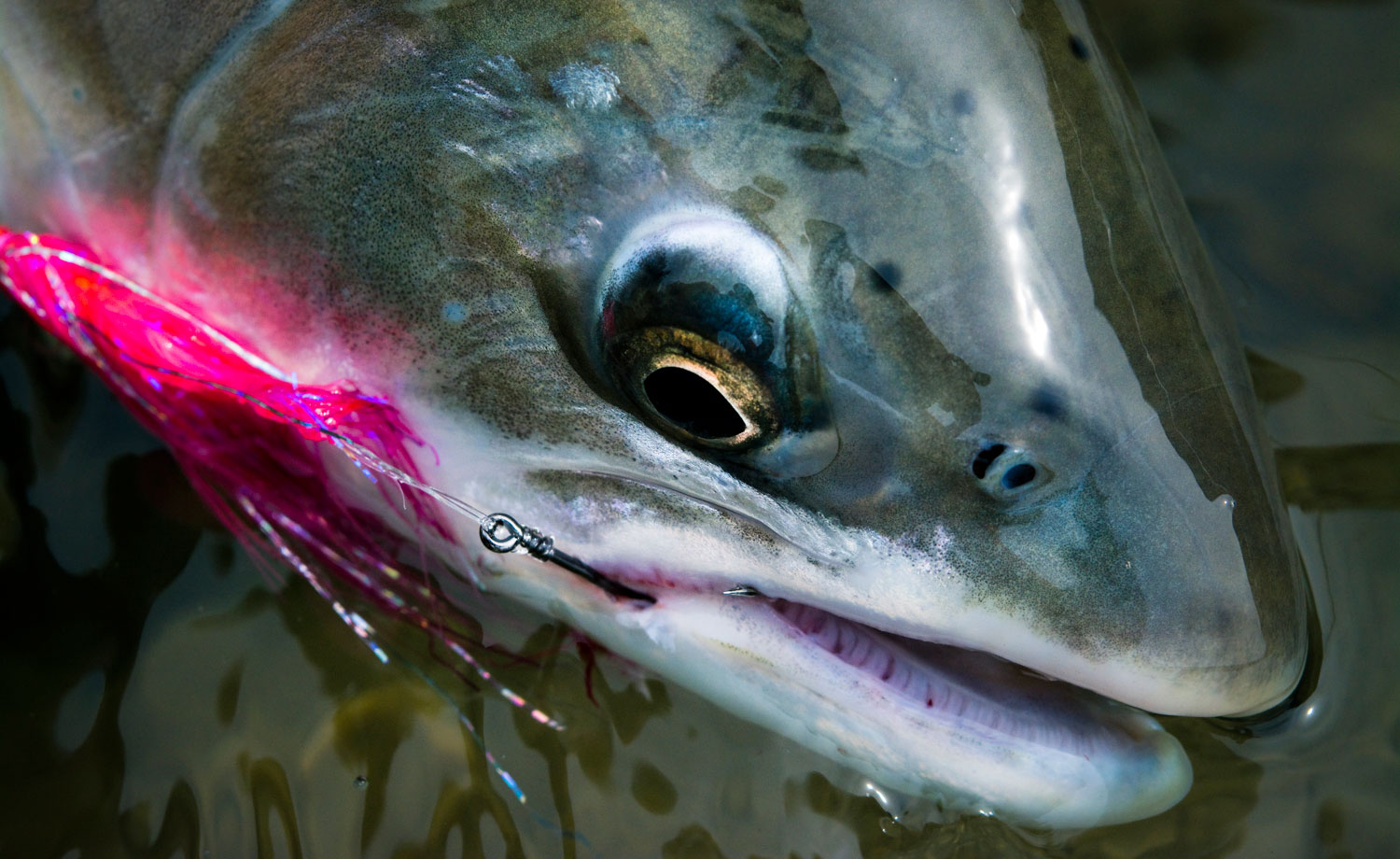
WHEN SWINGING FLIES FOR STEELHEAD, HOW IMPORTANT IS MANAGING THAT SWING?
It seems like a simple question. I know how I feel about it, but when you start talking to folks about it you get surprisingly different opinions. I’ve been told it doesn’t matter and I’ve been told it’s all that matters. I’ve heard it matters on some rivers and not on others. So where does the truth lie?
I was talking with a friend the other day when he asked me why I was catching more fish that week than he was. That’s, kind of, an impossible question to answer, especially where steelhead are concerned. It could be the magic fly or the right sink tip. It could be a ‘right place, right time’ situation. I have a friend who thinks it’s karma and it could well be dumb luck or what my grandfather called, “holding your mouth right.”
After some discussion, my friend Kevin was convinced the difference is in how I manage my swing. I learned how to swing flies from some pretty damned good anglers and I like to think I do a good job of it. My technique is also informed by some basic things I believe about fish and fishing. I do think it’s important and there are other things about catching steelhead that I think are equally important.
For what it’s worth, here’s how I manage my swing.
First of all, a good cast is a real asset. Turning your leader over, casting distance and accuracy are all important skills. That said, you
Read More »Fly Fishing: 6 Sight-Fishing Tips for Shallow Water Trout
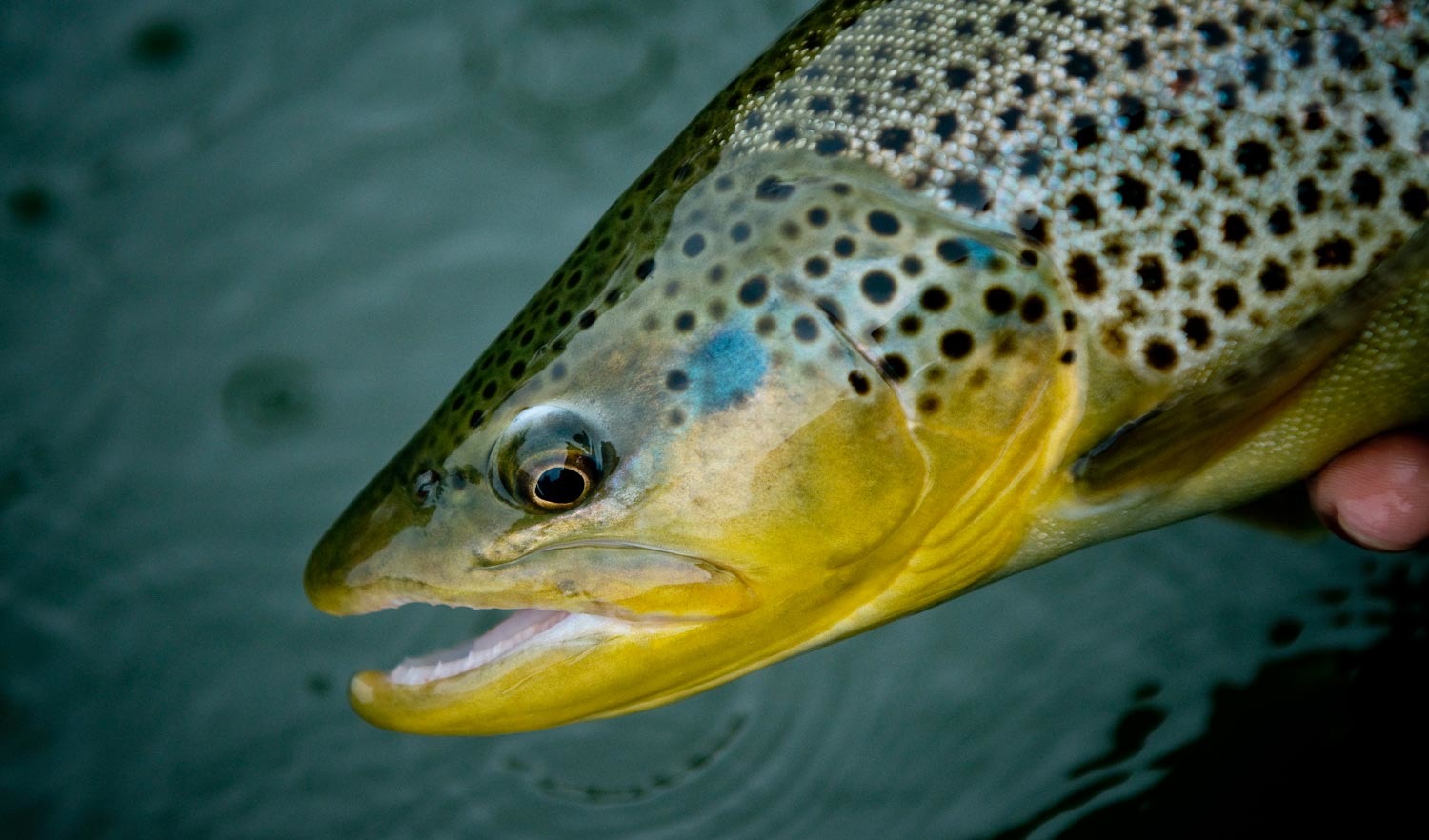
Fly fishing during the fall and winter months can really open the door to some great sight-fishing opportunities for fly anglers targeting trout. Generally, most of our wadable trout streams run low and clear from the lack of rainfall this time of year. If you keep your eyes peeled for trout and wade with extra stealth, there’s always a good chance to sneak up and sight-fish to the biggest trout of your life. With the brown trout moving up many watersheds in preparation for the spawn, and the rainbows or cutthroats aggressively feeding to put on weight for the cold winter ahead, the fall can provide fly fisherman the best trout fishing of the year. My clients and I catch some of our biggest trout during the fall and winter by wading in close to the big trout we’ve spotted and then making precise presentations to our targets. That being said, just because you can see the trout, doesn’t mean they’re always easy to catch. Some days, the trout will make you want to pull your hair out as you painfully watch your flies ignored over and over, as they drift within inches of the trout you’re sight-fishing to. Below are six tips to help fly anglers catch more shallow water trout while sight-fishing during the fall and winter months.
Read More »Pheasant Tail Nymph Attractor
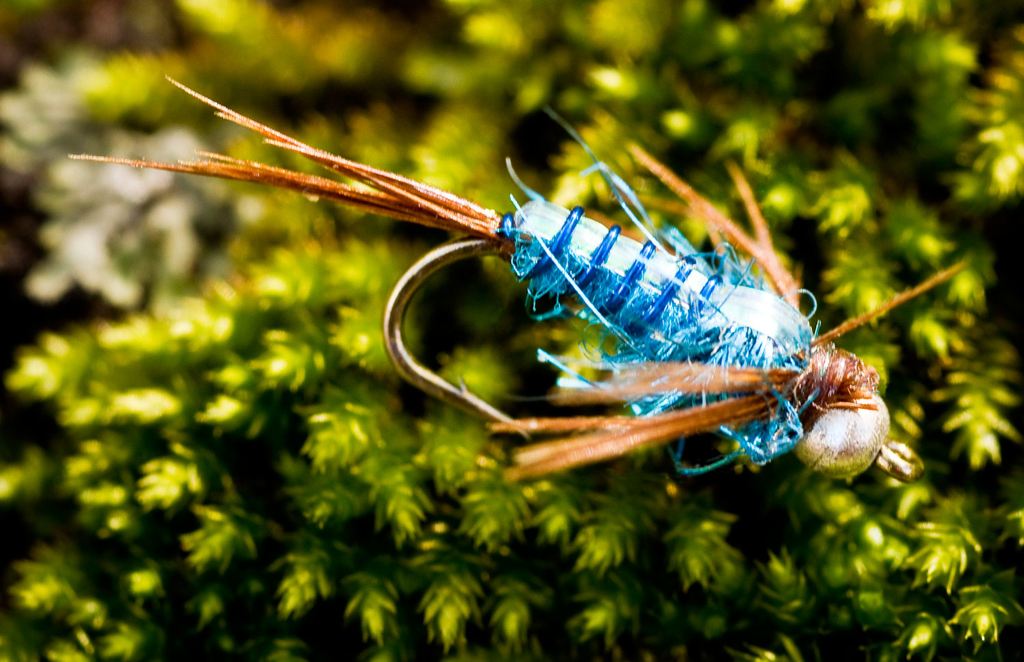
A WHILE BACK I POSTED ABOUT A ATTRACTOR MIDGE PATTERN THAT ALWAYS WORKS WELL FOR ME DURING THE COLDER MONTHS.
I received some really good feedback from the post from G&G followers. One follower even tied some up and landed multiple twenty inch fish with the midge pattern one day on his home waters. It feels good passing on information to our followers, especially when I hear back that they not only appreciate the advice but are actually putting it to work on the water. Since the first post was a success I’ve decided to showcase second cold water nymph pattern of mine.
I’m a firm believer in utilizing a bright attractor nymph in my tandem nymph rigs during the winter months. A couple years back I thought to myself why not take a proven traditional fly patterns and modify them with bright attractor fly tying materials. This way you can bank on both the proven profile characteristics and the flashy appeal. One of the first fly patterns I came up with for this idea was this pheasant tail attractor nymph above. It’s been very successful for me on the water. I generally use
Read More »Attractor Flies in Tandem Rigs
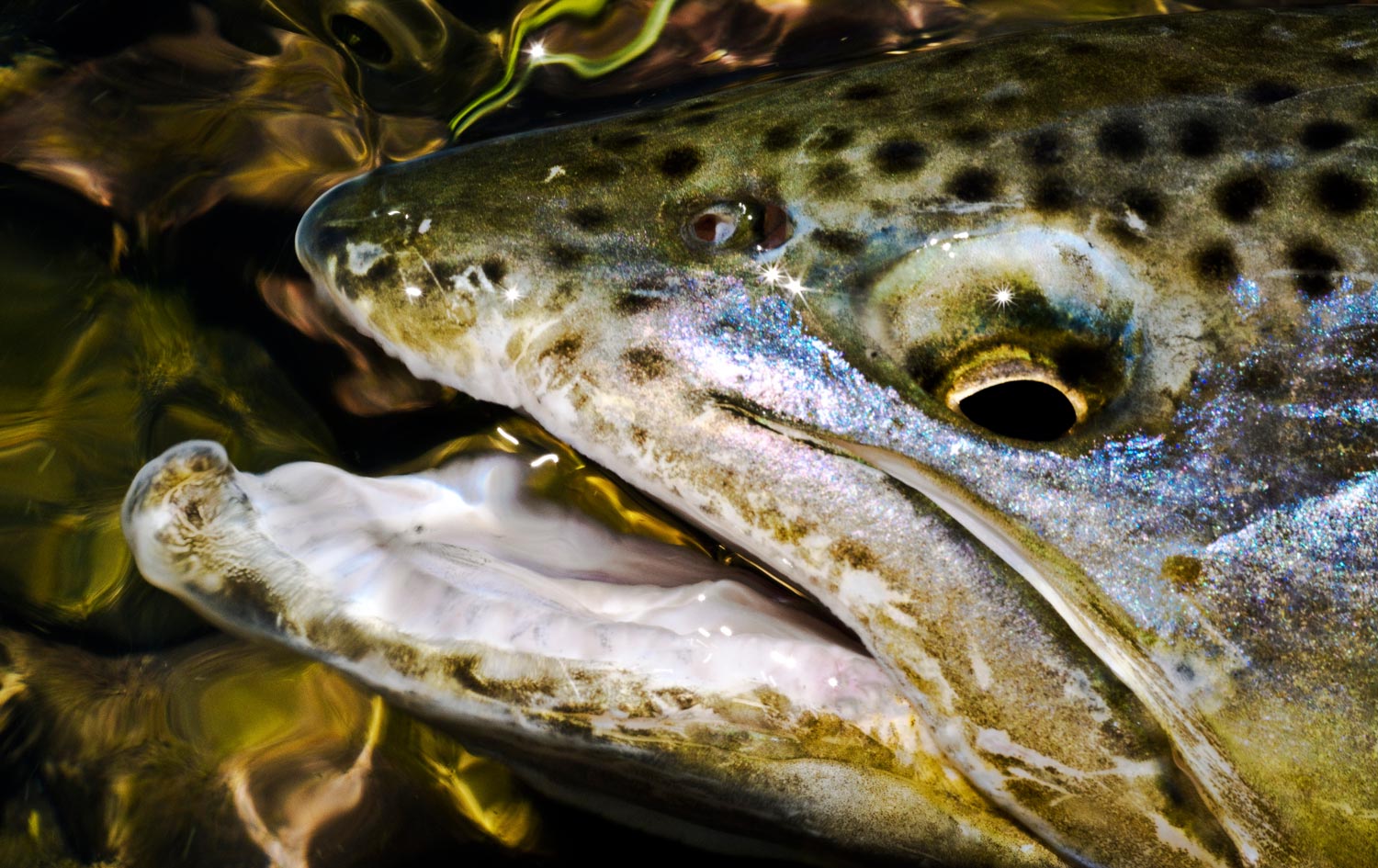
A LARGE PART OF FLY FISHING IS PROBLEM SOLVING.
Problems are just part of the game and the better you are at solving them, the more effective an angler you will be. Often the solutions require tactics that are unusual or counter intuitive. When fish are being stubborn a creative solution may be just what is needed.
On our recent trip to the Owyhee River in Oregon, Kent and I encountered such a problem. The Owyhee (the part we were fishing) is a tailwater. It’s a highly pressured and very technical fishery full of picky brown trout. That’s a big enough problem but there were other factors we were dealing with as well.
The Owyhee has an amazingly abundant insect population and the insects are very small. This means that your #22 fly is competing for the fish’s attention with thousands of tasty naturals. The fish do not have to move for food so the only way to feed them is to put the fly right on their nose.
No problem, and anglers generally do this by targeting rising fish because the waters of the Owyhee are stained with dissolved lime and calcium carbonate, a very fine silt that does not settle and gives the water an opaque green tint. The color makes it nearly impossible to sight fish when there are no fish rising. When we were there strong winds had put off the hatches so we were fishing blind. We were catching fish fairly regularly by reading water and being persistent and observant, but I kept thinking there had to be a better approach.
Read More »Beefcake Stone
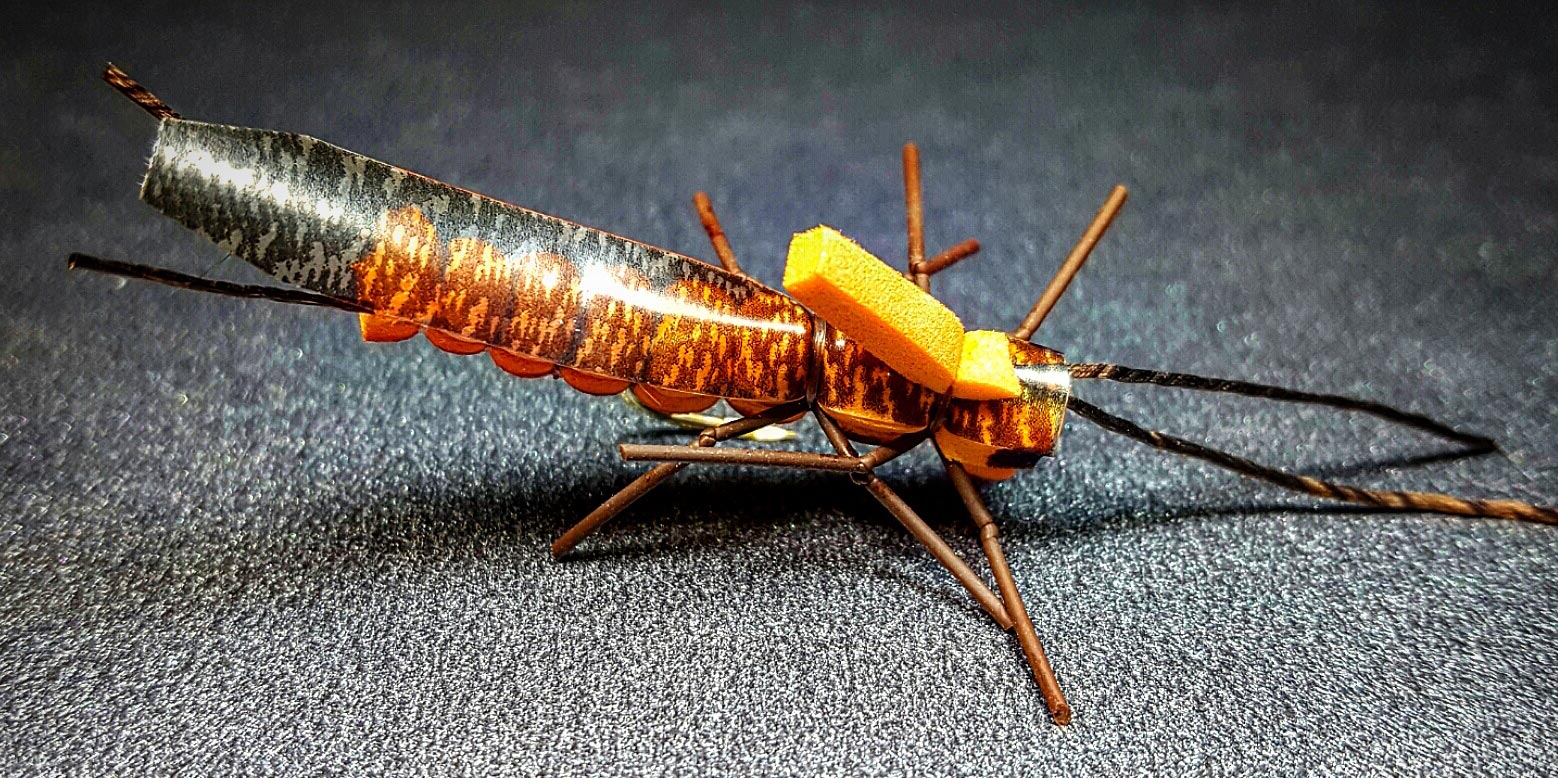
By Bob Reece
As the winter snows of the Rocky Mountains begin to thaw, a change is set in motion.
The landscape breaks loose and emerges from a crisp exoskeleton of winter. For many fly fishers the pinnacle of this yearly change is the transformation of Pteronarcys californica. Most fly fishers have some familiarity with spring salmonfly hatches that proclaim the beginning of a new season on many of western North America’s freestone rivers and streams. While the salmonfly emergence is one of fly fishing’s most compelling events, success during this time is not guaranteed and often depends of the design of your flies.
The Beefcake Stone is the epitome of a match for this hatch. While the body of this pattern is rigid, its appendages move easily. The Sexi-floss antennae and tail fibers, along with round rubber legs provide the fly with actively twitching limbs. Tantalizing action is paired with realism by knotting all of the legs. This nicely mimics the prominent leg joints in the adult Pteronarcys. Aesthetic appeal is crucial but without durability it is meaningless. Zap-A-Gap is essential when working with the foam elements of this pattern. It should be applied any time two foam surfaces are placed in contact. At the core of this pattern is the sturdy Tiemco 2499BL. This hook sticks and stays, using an upturned point design to prevent itself from being shaken loose. Its sturdy construction and short shank provide the security to land large fish in high flows that often accompany this event.
Triumph in fly fishing is often signified by a successful meeting of fly and fish. The expectation of this is rarely greater than when
Read More »Use Old Plano Boxes For Bulk Fly Storage

Of all the thousands of dollars of bass fishing gear that I’ve accumulated over the years there’s very little of it that I can find a use for in my fly fishing today.
Well, I could probably find a way to use some of it, but I’d definitely get bashed for it by my friends. My Plano tackle boxes, however, have proven to be very useful for me in my drift boat and when I’m traveling across the states on my fly fishing trips. I can load up one Plano box for my drift boat and I’m good for the day, and if I’m traveling out west, I often use one to throw all my big dry fly patterns or streamers in, so I don’t have to keep up with several smaller fly boxes during the trip. Every morning I’ll take out what I need and stow them in one or two fly boxes that I can carry easily with me on the water.
Read More »